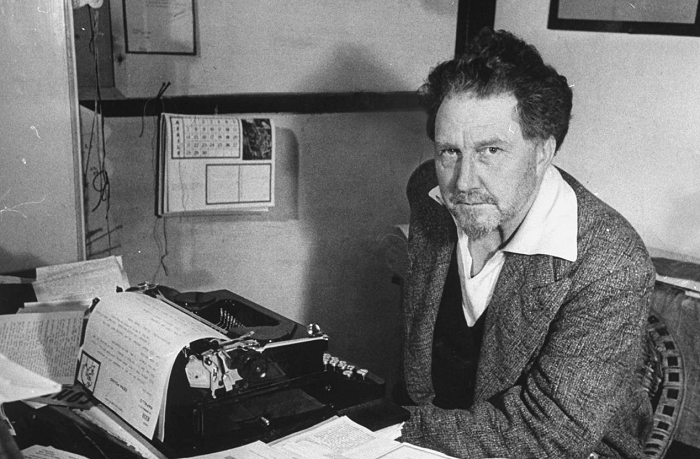How Did Ezra Pound’s Use of Language Innovate Poetic Expression?

Ezra Pound is widely recognized as a revolutionary figure in modern poetry. His work transformed the way poets approached language, form, and imagery. Pound believed that poetry should be precise, clear, and rooted in vivid experience. Through his innovations, he redefined poetic expression and influenced generations of writers. Understanding Ezra Pound’s approach to language reveals how he reshaped modern poetry.
Early Influences on Ezra Pound
Classical and Foreign Literature
Ezra Pound drew heavily from classical literature. He studied Greek, Latin, and Chinese texts, incorporating their economy of language and imagistic clarity into his own work. This approach allowed him to compress complex ideas into precise words and images.
Foreign literature also influenced Pound. Japanese haiku, in particular, inspired his use of brevity and direct description. Pound admired the ability to capture a single moment or image with minimal language. These influences shaped his poetic philosophy and led to a new focus on efficiency in expression.
Rejection of Victorian Style
Pound rejected the ornate and sentimental style common in Victorian poetry. He found long, decorative descriptions excessive and distracting. He preferred language that was concise and energetic, emphasizing rhythm, tone, and imagery.
This rejection of traditional styles marked the beginning of Pound’s radical experimentation. His goal was to craft poetry that communicated directly and powerfully, without unnecessary embellishment.
The Role of Imagism
Principles of Imagism
Ezra Pound was a key figure in the Imagist movement. Imagism prioritized clarity, precision, and economy of language. The movement advocated for the presentation of concrete images rather than abstract ideas.
Pound emphasized that every word in a poem should carry weight. He encouraged poets to avoid filler words and to select language that conveyed meaning with maximum impact. Ezra Pound’s contribution to Imagism set a new standard for poetic expression.
Practical Application in Poetry
In his own poems, Pound demonstrated the principles of Imagism. He often used short, sharp lines and concrete imagery to create vivid mental pictures. For example, in “In a Station of the Metro,” he condenses the experience of seeing a crowd into just two lines.
This minimalist approach showed how language could evoke emotion and meaning without lengthy exposition. Pound’s technique challenged poets to reconsider the power of words and their arrangement on the page.
Economic Language and Precision
Focus on Word Choice
Ezra Pound’s use of language emphasized precision. Each word was carefully chosen for its sound, rhythm, and meaning. He often removed unnecessary words to sharpen the impact of his lines.
This economy of language allowed for a more immediate connection between reader and poem. It also encouraged close attention to diction, sound patterns, and subtle nuances of meaning. Pound’s approach demonstrates how selective word use can transform poetic expression.
Visual and Auditory Effects
Pound paid close attention to how poems looked on the page and how they sounded aloud. His lines often create rhythm through the juxtaposition of short and long words, stress patterns, and punctuation.
The careful arrangement of words enhanced both the visual and auditory experience of reading his poetry. This attention to detail made Ezra Pound’s work innovative and influential, providing a model for poets who wanted to experiment with form and language.
Incorporation of Historical and Cultural Allusions
Intertextuality
Ezra Pound frequently used historical and cultural references in his poetry. He drew on classical myths, historical events, and literary traditions to enrich his work.
These allusions were not decorative; they were essential to the poem’s meaning. Pound used language to create layers of significance, connecting contemporary readers to past cultures and ideas. This practice expanded the expressive potential of poetry and encouraged intellectual engagement.
Linguistic Experimentation
Pound often incorporated multiple languages in a single poem. Latin, Italian, Chinese, and French phrases appear in his work, blending cultures and time periods. This technique challenges readers to engage actively with language, deepening the experience of the poem.
By experimenting with multilingual elements, Ezra Pound transformed the possibilities of poetic expression, demonstrating that language itself could be fluid, dynamic, and expansive.
Influence on Modern Poetry
Shaping 20th-Century Poets
Ezra Pound’s innovations influenced a wide range of poets, including T.S. Eliot, H.D., and William Carlos Williams. His insistence on clarity, precision, and imagistic expression became foundational principles for modernist poetry.
Poets adopted his techniques to create works that were intellectually rigorous yet emotionally resonant. Pound’s approach encouraged experimentation with form, rhythm, and cultural references.
Legacy of Innovation
The legacy of Ezra Pound lies in his ability to challenge conventional poetic norms. He demonstrated that language could be economical, precise, and visually and sonically striking. His work opened new avenues for expressing complex ideas in concise, powerful ways.
Modern poetry continues to draw from Pound’s innovations, whether in minimalism, imagistic clarity, or intertextual layering. His use of language remains a model for poets seeking to expand the expressive potential of their craft.
Conclusion
Ezra Pound revolutionized poetic expression through his precise, imagistic, and innovative use of language. By drawing from classical and foreign literature, rejecting ornate styles, and emphasizing clarity and economy, he reshaped how poets communicate ideas and emotions.
Through Imagism, careful word choice, visual and auditory effects, and intertextual allusions, Ezra Pound demonstrated that poetry could be both intellectually rich and emotionally powerful. His work challenged readers and poets alike to engage with language in new and profound ways.
Ultimately, Pound’s innovations continue to influence poetry today. He showed that the careful use of words, images, and rhythm could create a lasting impact, making poetry a dynamic and transformative art form. His contributions ensure that language remains at the heart of poetic invention, inspiring new generations to explore, experiment, and redefine the boundaries of expression.
- Art
- Causes
- Crafts
- Dance
- Drinks
- Film
- Fitness
- Food
- Oyunlar
- Gardening
- Health
- Home
- Literature
- Music
- Networking
- Other
- Party
- Religion
- Shopping
- Sports
- Theater
- Wellness



